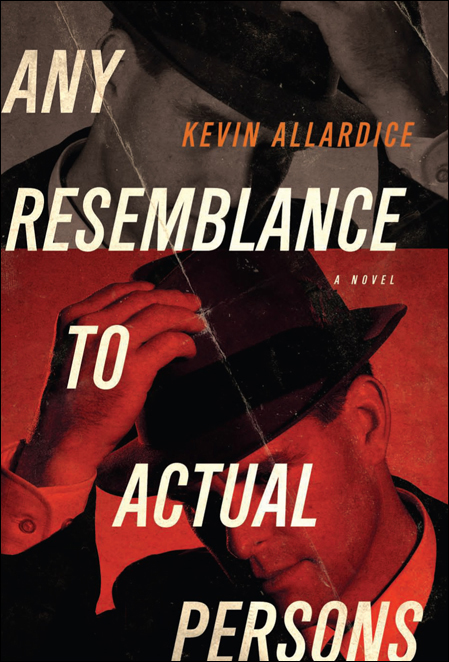
Any Resemblance to Actual Persons
A Novel
- اطلاعات
- نقد و بررسی
- دیدگاه کاربران
نقد و بررسی

July 15, 2013
Allardice’s debut novel has an unusual conceit: in 1996, a New York publisher is preparing to release Edith McWeeney’s The Dahlia Dossier: Hollywood’s Most Notorious Killer Revealed, in which the author attempts to prove that her father, George McWeeney, was the murderer in the notorious unsolved 1947 Black Dahlia case. Paul McWeeney, Edith’s brother, writes a long letter to the publisher (which forms the novel’s text) refuting that claim. A teacher at a junior college in L.A. and aspiring writer, he identifies with and even idealizes his late father. As his protest letter takes on its own life, we witness Paul’s own delusional world and self-destructive obsessions. Alas, he can be a pedantic bore. Allardice does a great job, however, of satirizing some key players of today’s Black Dahlia mythos—John Gilmore, Steve Hodel, and especially James Ellroy. This is not, finally, about the case so much as it is about the fragility of memory and one man’s reckoning with failure and dissolution. Agent: Nathaniel Jacks, Inkwell Management.

August 1, 2013
A community college professor and aspiring writer becomes obsessed with disproving his sister's claim that their father was responsible for the notorious Black Dahlia murder. In his debut novel, Allardice introduces failed novelist Paul McWeeney and his journey into a maddening obsession with discrediting the claims made in his sister's published book. Written in the form of a letter to his sister's publisher and in a stream-of-consciousness style (which includes nods to Marcel Proust and Hunter S. Thompson), McWeeney threatens legal action to prevent the publication of a book that claims his father killed Elizabeth "Betty" Short (aka the Black Dahlia) during a failed medical procedure. What starts as a seemingly succinct letter quickly becomes a running commentary on McWeeney's maniacal voyage into the creation of memories; reflections about his lack of teaching abilities, unusual family and intimate relationships; and his slipping grip on reality as he falls deeper into isolation. At the center of the story is how McWeeney and his sister, Edie, offer differing recollections of their deceased parents (a mother who leaves the family for a life in Africa and a father who wrote for a Dragnet-esque television show). The irreconcilable gap between the conflicting narratives becomes a central ingredient for McWeeney's self-destruction and marginalization. The most enjoyable portions of this book are McWeeney's constant diatribes, bursting with academic jargon, analysis to the point of absurdity and a strict policy of discounting any notion that strays from his view of a given topic. A humorous, well-written account of the damaging consequences of an intellectual obsession.
COPYRIGHT(2013) Kirkus Reviews, ALL RIGHTS RESERVED.

September 1, 2013
Community college adjunct English professor Paul McWeeney is outraged when he learns that his ditzy sister, Edie, is about to publish a book identifying their late father, TV screenwriter George McWeeney, as the murderer of Elizabeth Short, the iconic Black Dahlia, whose unsolved 1947 murder in Los Angeles spawned books and films. Edie credits her therapist with helping her recover repressed childhood memories that implicate her father. Paul resolves to use a two-week break between school terms to write a cease and desist letter to the publisher. What begins as a project filled with Olympian self-regard becomes an obsession that dives deep into the weeds of the Dahlia murder and also chronicles the dissolution of Paul's so-called life. Allardice's first novel attempts many things as both crime story and character study and often succeeds. It's quite a funny book, by turns broad and sly, and occasionally, it's shocking, as when Paul uses Ritalin to face grading students' assignments and later upgrades to cocaine for energy and clarity. Through it all, though, we empathize with his travail.(Reprinted with permission of Booklist, copyright 2013, American Library Association.)




دیدگاه کاربران